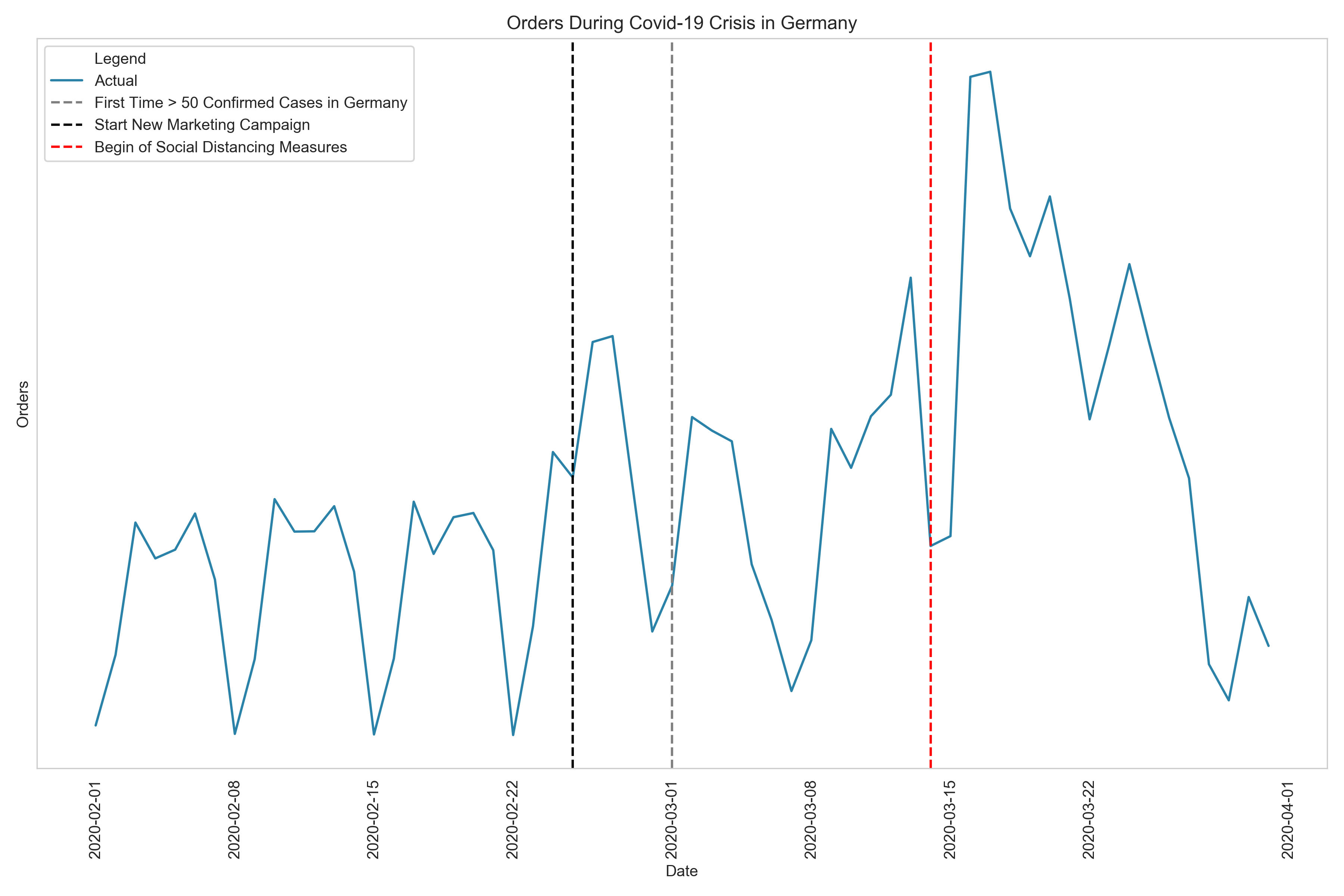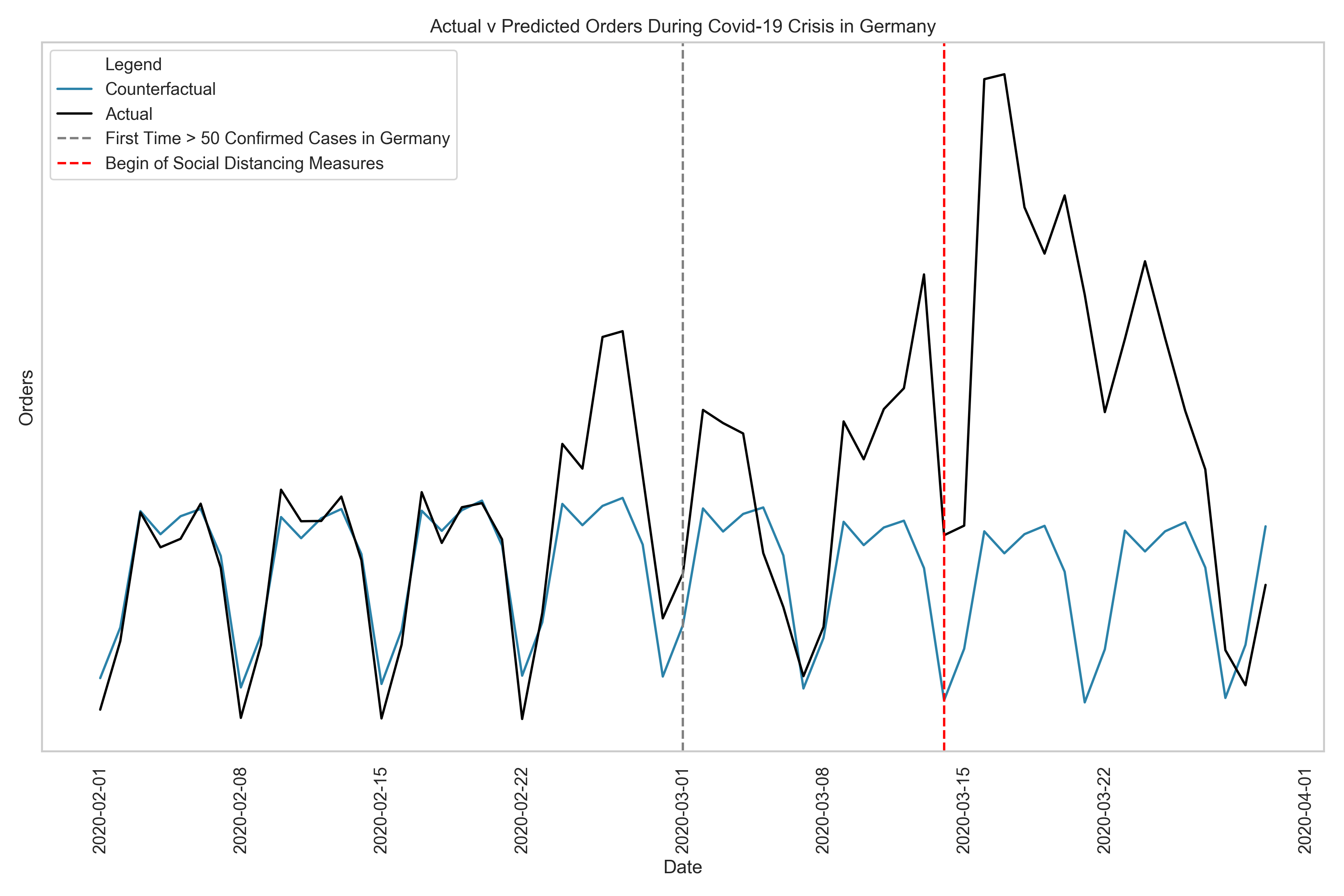How to Model and Analyze the Impact of the Coronavirus on Individual Businesses
The Covid-19 pandemic is a black swan event, heavily impacting sales and revenues of businesses around the world. Many companies experience a downturn if not a complete shutdown of their operations, others see an increase in demand for their products never experienced before.
Obviously our clients don’t need Adtriba to tell them whether the coronavirus has a positive or negative impact on their business. As one of our clients said, whose operations basically came to a complete standstill, we don’t need to look into Adtriba to see that the coronavirus has a negative impact on our business.
Clients don’t need Adtriba to tell them whether the coronavirus has a positive or negative impact.
The more important questions to ask is by just how much the pandemic has impacted the business and which marketing channels work and interact in which way during the crisis. On the one hand, this can help to learn how vulnerable the business and its particular operations are to such external effects. On the other hand it allows identifying opportunities in terms of marketing management, budget allocation and optimization. For example, a food delivery service could find out that in the current situation they don’t need to invest in upper funnel or branding campaigns, but rather invest more in lower funnel and conversion orientated generic keyword campaigns (e.g. “food delivery hamburg”).
Many companies solely look at the difference between planned and actual sales and interpret the delta as what’s caused by the Covid-19 pandemic. This oversimplified approach can lead to misleading insights and potentially flawed decisions. Even simply extrapolating the sales from the weeks before the coronavirus doesn’t allow for an accurate measure of the virus’ effect.
Short term peak or sustainable level shift?
It’s crucial to analyse and understand the type of impact the coronavirus has: whether it is a short term peak, a potential sustainable level shift (the “post coronavirus new normal”) or both. Being able to separate these two different types of effects ex post is important for decision making on a tactical and strategic level. For example, wrongly interpreting a short term increase in sales as a longer term level shift could lead to overinvesting in more supplies, manufacturing equipment or brand building activities.
We know from some of our clients, which have seen a surge in demand at the beginning of the crisis, that they are very careful in being overly optimistic. They intuitively know quite well that the short term increase in revenue could be short lived.
This is also very important to incorporate into the analysis and needs to be accounted for in any future modeling of marketing effectiveness and optimization. Otherwise the algorithms and developed models will have an inherent bias, which potentially could lead to suboptimal budgeting decisions. As an example let’s assume the food delivery service from the above example sees an increase in orders starting around the 25th of February. If the effect of the Covid-19 pandemic isn’t accounted for, marketing effectiveness modeling would wrongly credit the marketing campaigns during the time of increased demand with the higher number of conversions. This would lead to overinvesting in these types of marketing activities.

The start of the new marketing campaign accidentally fell together with a peal in sales mostly due to the coronavirus and a peak in google trends for the keyword “hamsterkäufe” (not shown here).
The solution? Causal modeling and reasoning
One of the cornerstones of causal reasoning is the potential outcomes framework that we already use in various parts of our system, such as the TV evaluation and Media Mix modules. In a nutshell, in our context this means comparing different alternative futures (potential outcomes) using ‘counterfactual’ predictions generated by Machine Learning. For example, in our TV evaluation model, we predict the number of visitors per minute on an advertisers website without TV advertising present (the counterfactual).
Usually - in peacetime, if you will - Adtribas Machine learning algorithms work by crunching large amounts of past data to discover relationships between advertising, seasonality and the desired outcomes. This works usually really well for relating TV GRPs and Facebook impressions to search clicks - and in turn to sales - while controlling for seasonal effects. But what past data exists on a pandemic that confines 43% of the world’s population in their homes? The last time a similar event (the Spanish flu) occured in 1918. Most of our clients weren’t operational by then, and certainly didn’t spend money on performance marketing.
So, instead of feeding our algorithms past data on pandemics (that we don’t have), we feed it all the data that we would have usually fed it - the TV reach, Facebook and Instagram impressions, seasonality-related factors and the like - up until Mid-January. Then, we use the model to answer the question: ‘What would have happened without the coronavirus crisis?’. By predicting the desired outcomes over the time period since the crisis unfolded we generate the ‘counterfactual’ - the alternative scenario in a world without Covid-19. Through comparing the counterfactual time series of orders vs. the actual one an accurate measurement of the virus’ impact is possible.

Predicting a counterfactual time series of orders and comparing them to actual sales it’s possible to assess the virus’ impact on a per day basis.